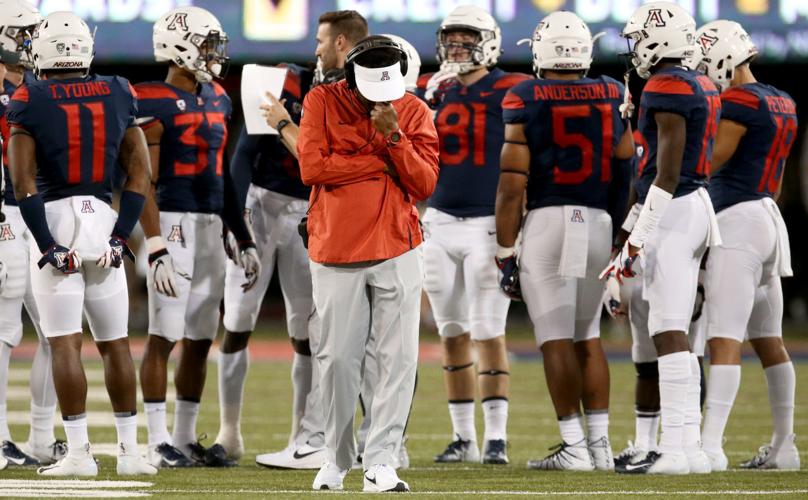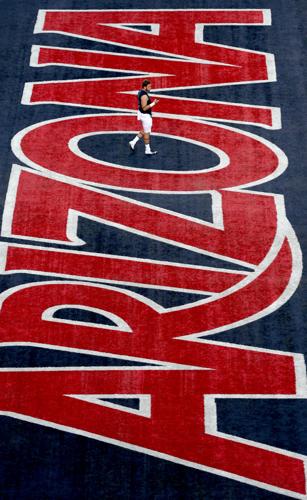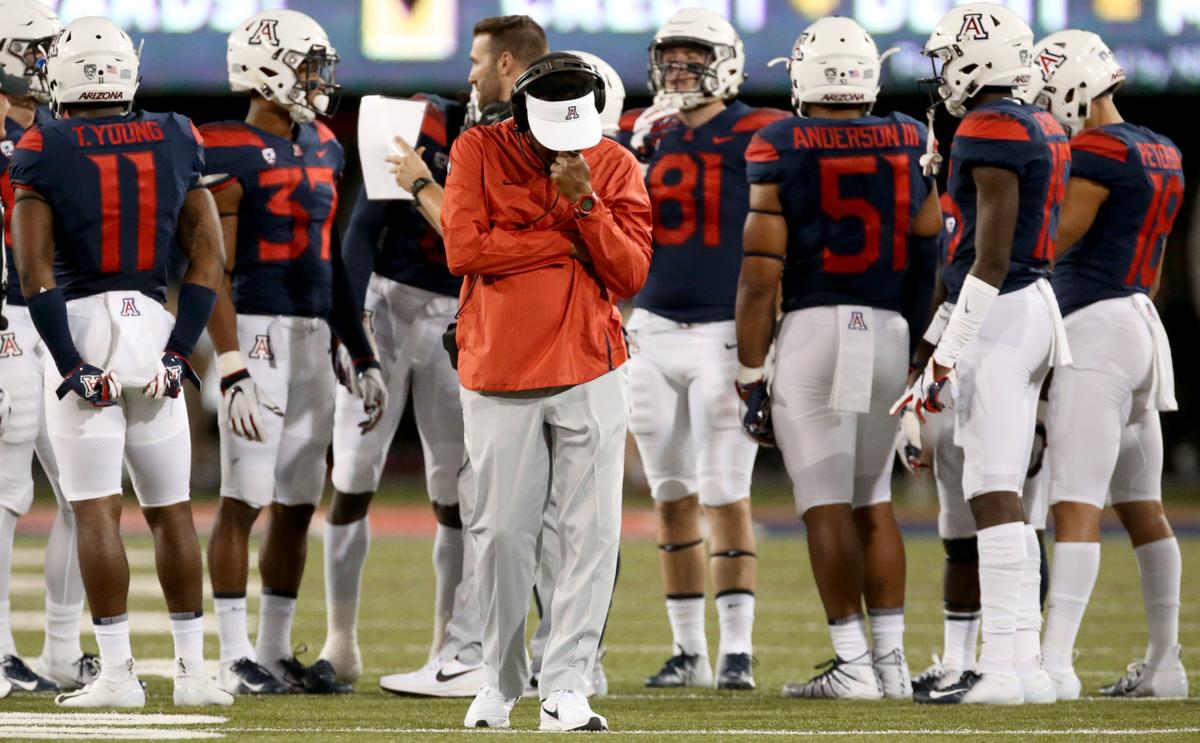The Arizona Wildcats have been slow starters this season in more ways than one.
On a macro level, Arizona is 2-3. Most preseason prognosticators figured the Wildcats would be 3-2 at this point — at worst.
If they were to lose Saturday night against Cal, the Wildcats would be 2-4 entering back-to-back road games, starting with a Friday night affair against Utah. That might be too deep a hole to climb out of to qualify for a bowl game — which, barring a run like last October, might be the best-case scenario for this team anyway.
Of course, this particular UA squad is intimately familiar with sizable deficits. Arizona has stumbled out of the gate multiple times this season.
The Wildcats have a point differential of minus-21 in the first quarter and minus-10 in the second. They’re plus-13 in the third quarter and plus-34 in the fourth.

Opponents have outscored Arizona by 31 in the first half of games, but the Wildcats own a 47-point edge after halftime.
In losses to Houston and USC, Arizona trailed by a combined 62-0 less than five minutes into the second half. The Wildcats were up 10-7 at halftime against BYU, but UA coach Kevin Sumlin felt the lead should have been greater after Arizona ran 43 plays and gained 14 first downs. The Cougars jumped the Wildcats in the third quarter and led 28-10 entering the fourth.
UA players struggled to explain the sluggish starts.
“I’m really not sure,” redshirt-junior guard Cody Creason said. “I think we have to just execute better coming out at the beginning of games. It seems like it takes us a while to get in our rhythm.”
“We’re trying to figure that out now,” redshirt freshman receiver Stanley Berryhill III said. “We’re planning on fixing it.”
The Wildcats are aware of the problem. They’re addressing it. That is — if you’ll excuse the pun — a start.
Several players cited the team’s fluctuating energy level as a problem. Theories abound on its root cause.
One is Sumlin’s even-keeled demeanor (a trait shared by defensive coordinator Marcel Yates, by the way). Another is Arizona’s wildly varying kickoff times. Before this week, the Wildcats had alternated between early and late starts, including an 11 a.m. Central Time kickoff at Houston.
Skeptics would dismiss both theories as excuses.
College football players shouldn’t need a rah-rah coach to get them fired up. As cornerback Lorenzo Burns put it: “When you’re on the football field, you’re under the lights on a Saturday, you have a crowd that’s cheering you on, you’re playing a big, ranked opponent, you have to find something within yourself to motivate you. Me personally, that’s being on the field with my teammates and appreciating the moment.”
Two weeks after the morning start at Houston — the game began at 9 a.m. Tucson time — Arizona kicked off at 1 p.m. against Oregon State. The Wildcats squandered some scoring opportunities but forced a three-and-out on the Beavers’ first possession, scored on their first drive and controlled the line of scrimmage in a 35-14 romp.
Sumlin also debunked the idea that Arizona wasn’t prepared to handle the pressure that accompanies heightened expectations. Last year’s improvement — the Wildcats went from 3-9 to 7-6 — the emergence of Khalil Tate, the returning experience on defense and the arrival of Sumlin made Arizona a popular pick to win the Pac-12 South. Tate entered the season under an intense spotlight unlike anything he previously had experienced.
Neither he nor the team have lived up those expectations.
“Pressure’s what you put on yourself,” Sumlin said. “We keep pressure on ourselves, me personally and our team to be the best they can be.
“The more you do this, the more you’re around teams that are pretty high profile, we deal with that in different ways. Handling outside noise is part of this business. Being able to deal with things consistently, internally, is the best way to (do) that.
“What gets said about a team is what’s said. You can’t control that. What you can control is your performance and your effort, and that’s what we focus on.”
The Wildcats’ effort never has suffered, even when they’ve been down, and that’s the biggest reason to be optimistic about this week and the back half of the season.
Down 28-10 to BYU, Arizona scored two fourth-quarter touchdowns to make it 28-23 with 3:20 left. Down 24-0 to USC, Arizona made it 24-20 with 1:40 remaining. Even against Houston, Arizona trimmed its deficit to 20 points and had the ball near midfield with more than five minutes remaining.
The defense, in particular, showed promising signs over the final quarter-plus against the Trojans.
“It’s easy to just tuck our tail between our legs and run away from the action,” Burns said. “We … adjusted to it and fixed the problems. It showed who we are as a defense. When we do have problems come our way, or we suffer from a big touchdown in a key moment, we’re able to bounce back and become a shutdown defense like we’re capable of.”
The question is whether that strong finish will translate to a solid start. Sumlin has been seeking consistency, and it has proved to be elusive — from game to game and quarter to quarter.
“I think we’re progressing in the right way,” Burns said. “There’s still a lot of things to fix, of course. But I think we’re going in a positive direction.
“They were the Pac-12 champs last year, ’SC. We played them pretty tough. I feel like we should’ve won the game.
“Like I said before, it showed who we are as a team. That when we want to, when we come together as a team, we can be very dominant on the football field. Knowing that, for the rest of the season, once we start clicking, we should be fine.”






